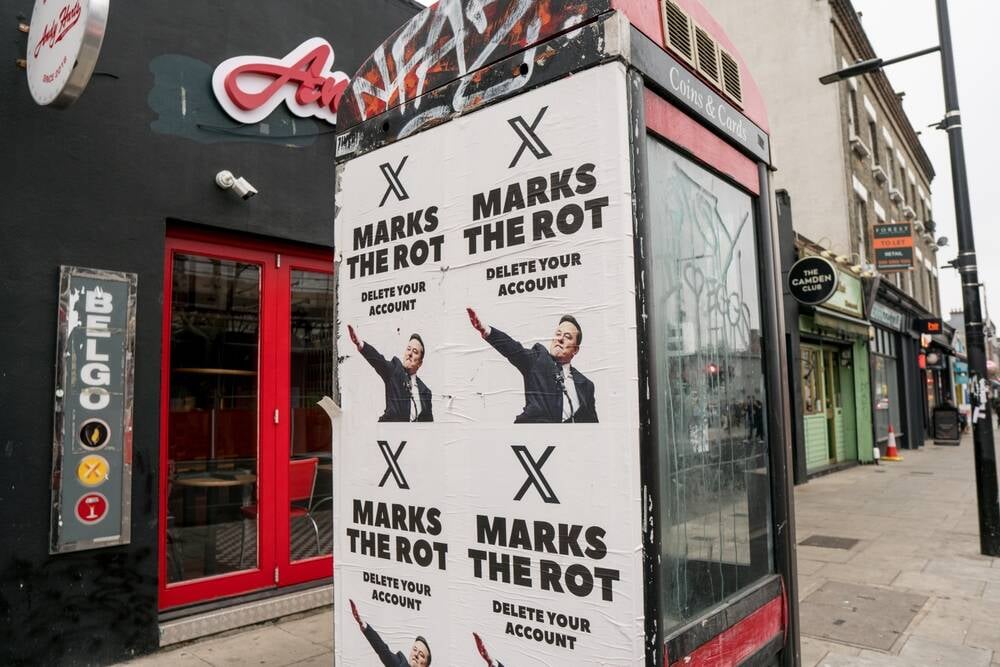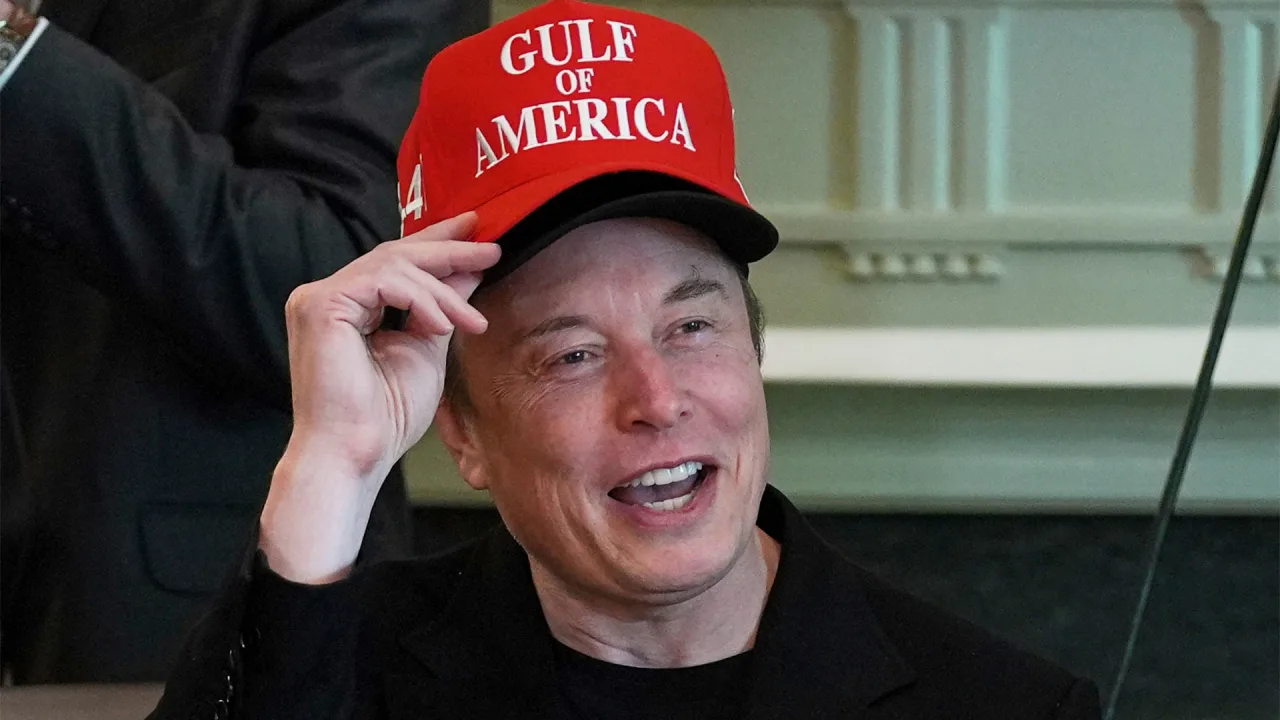Trump promised to slash energy prices. 100 days in, they’re up—and expected to keep rising
On the campaign trail, President Donald Trump made multiple promises to lower energy prices and electricity bills for Americans, but 100 days into his second term, energy prices are up—and expected to keep increasing. Experts say Trump’s energy policies—like inhibiting renewables, canceling federal energy assistance programs, and enacting widespread tariffs—are to blame. “Under my administration, we will be slashing energy and electricity prices by half within 12 months, at a maximum 18 months,” Trump said in August. “Energy is going to bring us back. That means we’re going down and getting gasoline below $2 a gallon, bring down the price of everything from electricity rates to groceries,” he said in September. (Though at times he did hedge: “If it doesn’t work out,” he also said in August, “you’ll say, ‘oh well, I voted for him and he still got it down a lot.’”) At the 100-day mark, though, average gas and electricity prices are up, some Americans have already seen their energy bills increase, and there’s “potential for much more harm,” says Charles Harper, senior policy lead for the power sector at Evergreen Action. Average prices are up—and Trump policies will raise them more Trump recently claimed that gas prices dipped below $2 a gallon in some states, but that’s not true. The national average price of gas is currently $3.17 a gallon, 5 cents higher than a month ago—and tariffs are set to spike gas prices soon. U.S. refineries make gasoline from crude oil, which is produced here but also imported—predominantly from Canada and Mexico. The U.S. imports about 4 million barrels of Canadian oil per day. (We also import what’s called “finished motor gasoline” from other countries, primarily Canada.) Average electricity prices are also up, to $0.181 per kilowatt per the Bureau of Labor Statistics. That’s a slight uptick from both January and February, and the highest price on record. Though Trump ran on a platform of “energy dominance and unlocking American energy,” Harper notes, “he hypocritically has tried to kill some forms of energy that are the lowest cost.” Wind and solar are the cheapest forms of electricity to build, and also the fastest to deploy. Yet Trump has taken aim at these energy sources, suspending funding for clean energy projects and issuing orders to stop projects already underway, including for an offshore wind farm that would power more than 500,000 New York homes. In a list of “energy resources” he says we need to increase, Trump specifically excluded wind, solar, and battery power. Trump cut low-income energy assistance In the first 100 days of Trump’s second term, low-income Americans, in particular, have been hit with extra energy charges because of his actions. When Trump paused funding from the Infrastructure Investment and Jobs Act, as part of his “Unleashing American Energy” executive order, that affected the Low Income Home Energy Assistance Program (LIHEAP), which helps more than 6 million low-income households across the country cover their energy bills. Without those funds, about 2,000 low-income households in Alabama saw an immediate $100 added to their utility bills, in just one example. By April, states were missing out on about $400 million in LIHEAP funding that had yet to be distributed by the federal government. Trump and the Department of Government Efficiency (DOGE) have fired LIHEAP’s staff as they try to kill the program entirely. That’s expected to raise energy bills for millions of Americans, meaning low-income households will be less able to pay those bills, or less likely to adequately heat and cool their homes. Previous cuts to LIHEAP have seen these effects play out. In 2023, Congress cut $2 billion from LIHEAP’s budget, and utility debt increased by 8.4% over the next year; 22% of households also kept their homes at unsafe temperatures in 2024, compared to 19.8% the year prior. Tariffs will keep increasing gas and electricity costs Trump’s tariffs on China, Mexico, and Canada aren’t only affecting consumer goods; they’ll also raise energy prices. Just how much depends on where you live, but Midwest states are expected to be hit the hardest. Trump enacted a 10% tariff on Canadian energy imports and 25% on Mexican energy imports, which could raise gas prices by as much as 50 cents per gallon for people in the Midwest, according to the Council on Foreign Relations. Canada and Mexico supply more than 71% of crude oil to U.S. refineries across the country (nearly 60% of all U.S. crude oil imports come from Canada alone). Canada has also threatened retaliatory tariffs, including a 25% surcharge on electricity sold to Michigan, Minnesota, and New York. Tariffs on steel and aluminum could also make new grid infrastructure and energy projects more expensive. Trump’s push for fossil fuels may backfire Much of Trump’s campaign promises and early term actions aim to increase fossil fuel production. But that won’t

On the campaign trail, President Donald Trump made multiple promises to lower energy prices and electricity bills for Americans, but 100 days into his second term, energy prices are up—and expected to keep increasing. Experts say Trump’s energy policies—like inhibiting renewables, canceling federal energy assistance programs, and enacting widespread tariffs—are to blame.
“Under my administration, we will be slashing energy and electricity prices by half within 12 months, at a maximum 18 months,” Trump said in August. “Energy is going to bring us back. That means we’re going down and getting gasoline below $2 a gallon, bring down the price of everything from electricity rates to groceries,” he said in September. (Though at times he did hedge: “If it doesn’t work out,” he also said in August, “you’ll say, ‘oh well, I voted for him and he still got it down a lot.’”)
At the 100-day mark, though, average gas and electricity prices are up, some Americans have already seen their energy bills increase, and there’s “potential for much more harm,” says Charles Harper, senior policy lead for the power sector at Evergreen Action.
Average prices are up—and Trump policies will raise them more
Trump recently claimed that gas prices dipped below $2 a gallon in some states, but that’s not true. The national average price of gas is currently $3.17 a gallon, 5 cents higher than a month ago—and tariffs are set to spike gas prices soon. U.S. refineries make gasoline from crude oil, which is produced here but also imported—predominantly from Canada and Mexico. The U.S. imports about 4 million barrels of Canadian oil per day. (We also import what’s called “finished motor gasoline” from other countries, primarily Canada.)
Average electricity prices are also up, to $0.181 per kilowatt per the Bureau of Labor Statistics. That’s a slight uptick from both January and February, and the highest price on record.
Though Trump ran on a platform of “energy dominance and unlocking American energy,” Harper notes, “he hypocritically has tried to kill some forms of energy that are the lowest cost.” Wind and solar are the cheapest forms of electricity to build, and also the fastest to deploy.
Yet Trump has taken aim at these energy sources, suspending funding for clean energy projects and issuing orders to stop projects already underway, including for an offshore wind farm that would power more than 500,000 New York homes. In a list of “energy resources” he says we need to increase, Trump specifically excluded wind, solar, and battery power.
Trump cut low-income energy assistance
In the first 100 days of Trump’s second term, low-income Americans, in particular, have been hit with extra energy charges because of his actions. When Trump paused funding from the Infrastructure Investment and Jobs Act, as part of his “Unleashing American Energy” executive order, that affected the Low Income Home Energy Assistance Program (LIHEAP), which helps more than 6 million low-income households across the country cover their energy bills.
Without those funds, about 2,000 low-income households in Alabama saw an immediate $100 added to their utility bills, in just one example. By April, states were missing out on about $400 million in LIHEAP funding that had yet to be distributed by the federal government. Trump and the Department of Government Efficiency (DOGE) have fired LIHEAP’s staff as they try to kill the program entirely.
That’s expected to raise energy bills for millions of Americans, meaning low-income households will be less able to pay those bills, or less likely to adequately heat and cool their homes. Previous cuts to LIHEAP have seen these effects play out. In 2023, Congress cut $2 billion from LIHEAP’s budget, and utility debt increased by 8.4% over the next year; 22% of households also kept their homes at unsafe temperatures in 2024, compared to 19.8% the year prior.
Tariffs will keep increasing gas and electricity costs
Trump’s tariffs on China, Mexico, and Canada aren’t only affecting consumer goods; they’ll also raise energy prices. Just how much depends on where you live, but Midwest states are expected to be hit the hardest. Trump enacted a 10% tariff on Canadian energy imports and 25% on Mexican energy imports, which could raise gas prices by as much as 50 cents per gallon for people in the Midwest, according to the Council on Foreign Relations.
Canada and Mexico supply more than 71% of crude oil to U.S. refineries across the country (nearly 60% of all U.S. crude oil imports come from Canada alone). Canada has also threatened retaliatory tariffs, including a 25% surcharge on electricity sold to Michigan, Minnesota, and New York. Tariffs on steel and aluminum could also make new grid infrastructure and energy projects more expensive.
Trump’s push for fossil fuels may backfire
Much of Trump’s campaign promises and early term actions aim to increase fossil fuel production. But that won’t necessarily help energy prices or U.S. households’ energy bills—or even fossil fuel companies themselves.
Trump has said he wants to bring back retired coal plants, but those plants closed because they were no longer economically viable. Putting them back online would be an expensive undertaking that would also increase electricity prices once they’re up and running.
Trump has also looked to increase exports of liquified natural gas (LNG), and has approved licenses for new LNG projects. But increasing LNG exports actually increases domestic energy prices. Because that natural gas is being sold abroad, it makes it subject to global price fluctuations, and means exports aren’t addressing local demand. (When Russia invaded Ukraine, for example, European countries bought more LNG from the U.S., sending prices skyrocketing for Louisiana residents.) Thanks to rampant tax breaks, LNG projects can also cost local communities millions of dollars.
Trump’s actions have further increased uncertainty for fossil fuel companies. He has aimed to boost fossil fuel production by fast-tracking the approval process for new projects, and has said he wants oil prices to drop to $50 a barrel—but that price is considered too low to be profitable. Oil and gas companies aren’t clamoring to drill both because they don’t want to overproduce and flood the market, and because fears of a recession are causing uncertainty about the future.
“This ‘Drill, baby, drill’ agenda his administration has been pushing is not bearing out in practice,” Harper says. “Many oil and gas companies benefit from a lower supply of energy and corresponding higher prices because they have higher profit margins on every barrel of oil that they sell, and they are really resistant to increasing production.”
Oil and natural gas, including LNG exports, are both global markets “that are subject to the whims of other countries and global demands,” Harper adds. That means it’s impossible to isolate America from global price volatility. Clean energy could be a different story, because it’s generated domestically—but as previously noted, Trump is hampering clean energy projects rather than pursuing them.
All of these actions will only continue to raise energy prices for Americans, Harper says—and, he notes, they’re also all “self-inflicted wounds done by the new administration.”






































































































































































![[The AI Show Episode 145]: OpenAI Releases o3 and o4-mini, AI Is Causing “Quiet Layoffs,” Executive Order on Youth AI Education & GPT-4o’s Controversial Update](https://www.marketingaiinstitute.com/hubfs/ep%20145%20cover.png)





























































































































![[DEALS] Mail Backup X Individual Edition: Lifetime Subscription (72% off) & Other Deals Up To 98% Off – Offers End Soon!](https://www.javacodegeeks.com/wp-content/uploads/2012/12/jcg-logo.jpg)












































































































































_Andreas_Prott_Alamy.jpg?width=1280&auto=webp&quality=80&disable=upscale#)































































































![Severance-inspired keyboard could cost up to $699 – have your say [Video]](https://i0.wp.com/9to5mac.com/wp-content/uploads/sites/6/2025/05/Severance-inspired-keyboard-could-cost-up-to-699-%E2%80%93-have-your-say-Video.jpg?resize=1200%2C628&quality=82&strip=all&ssl=1)
















![Apple Ships 55 Million iPhones, Claims Second Place in Q1 2025 Smartphone Market [Report]](https://www.iclarified.com/images/news/97185/97185/97185-640.jpg)






































































































